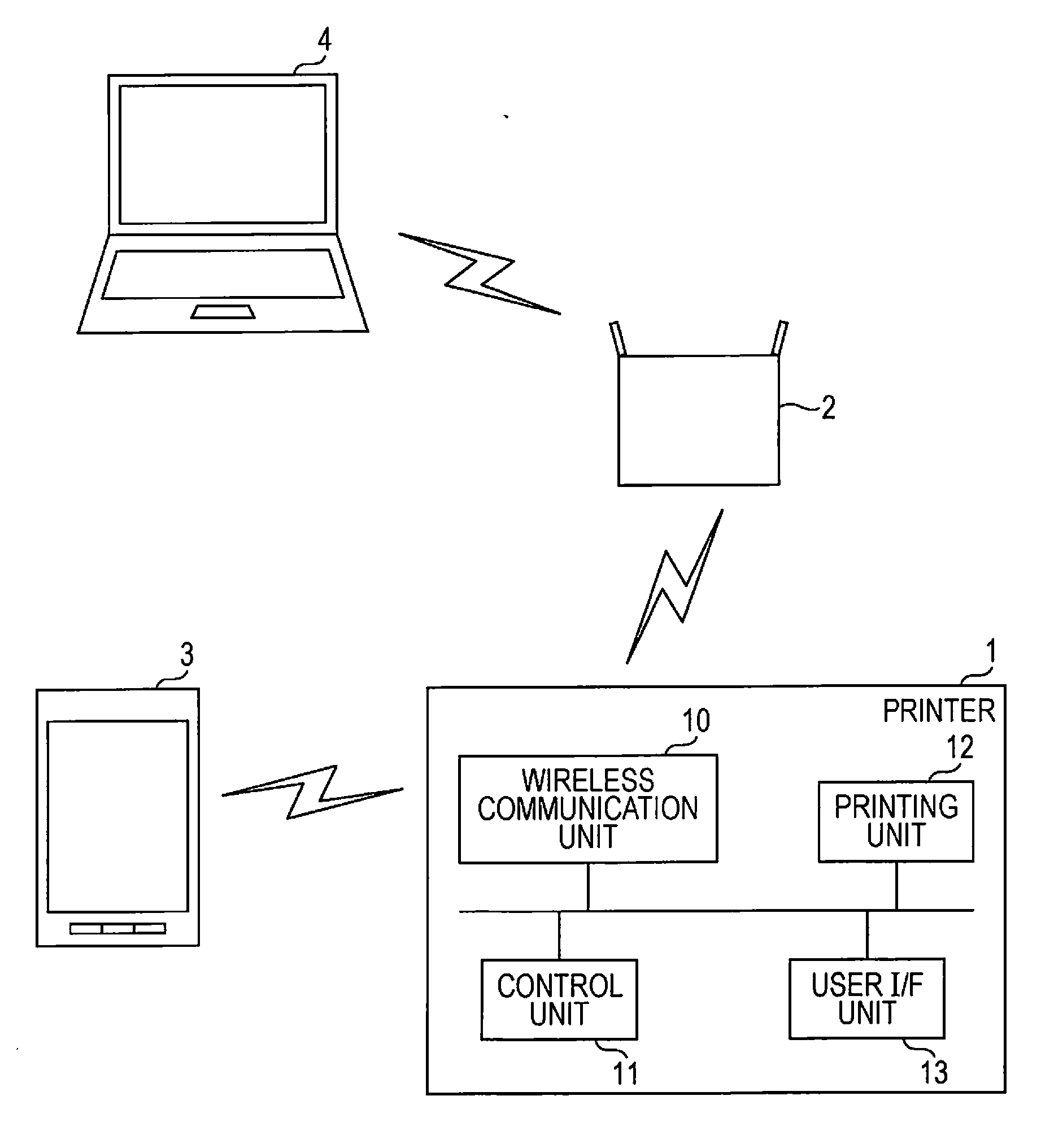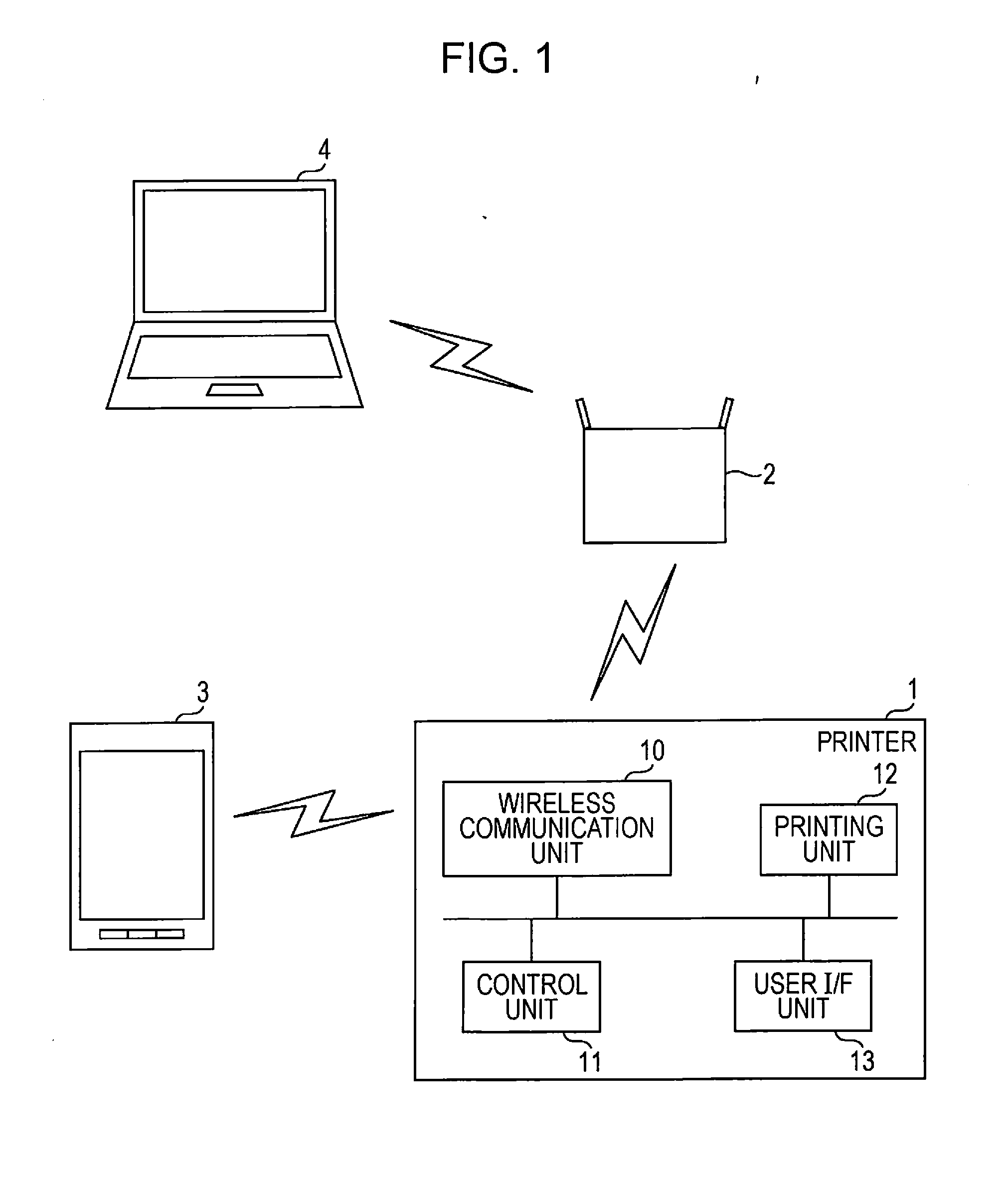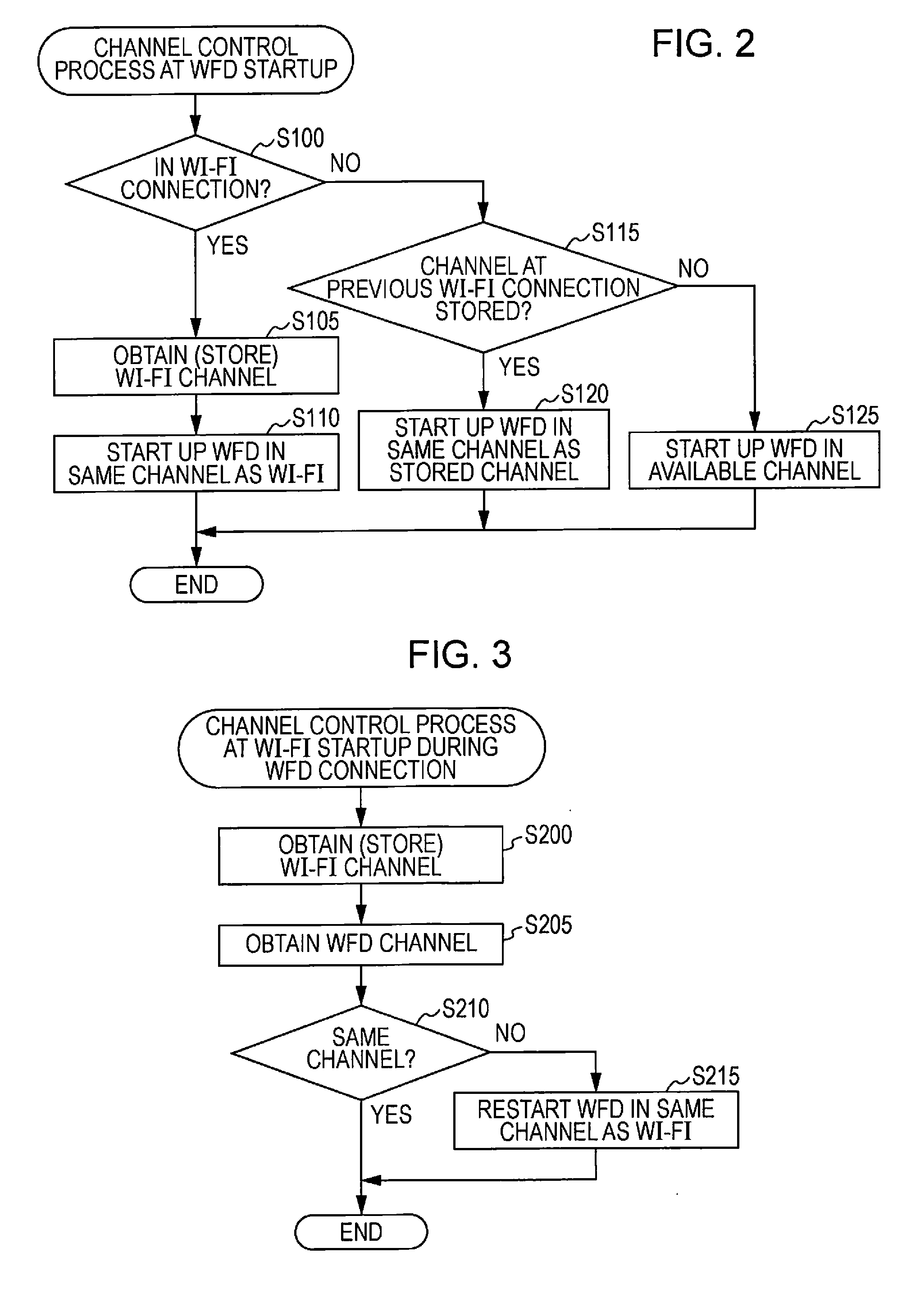Wireless communication device and wireless communication method
a wireless communication and wireless communication technology, applied in wireless communication, multiplex communication, frequency-division multiplex, etc., can solve the problems of reducing the likelihood of an undesirable decrease in the transmission speed of each communication, and undesirable reduction in transmission speed
- Summary
- Abstract
- Description
- Claims
- Application Information
AI Technical Summary
Benefits of technology
Problems solved by technology
Method used
Image
Examples
first embodiment
1. First Embodiment
1-1. Configuration
[0026]FIG. 1 is a block diagram illustrating a printer 1 as a wireless communication device of the embodiments of the invention. The printer 1 is able to wirelessly communicate with a personal computer (PC) 4 by Wi-Fi via an access point (AP) 2 as a relay device (the first wireless communication). Further, the printer 1 is able to wirelessly communicate with a smartphone 3 as a wireless terminal by Wi-Fi Direct (hereafter, referred to as “WFD”) (the second wireless communication).
[0027]The printer 1 includes a wireless communication unit 10, a control unit 11, a printing unit 12, and a user I / F unit 13. The control unit 11 includes a CPU, a non-volatile memory, a RAM, an ASIC, and so on and is able to control each unit of the printer 1 by causing the CPU to execute various programs such as a communication control program and a print control program stored in the non-volatile memory. The communication control program includes a program that implem...
second embodiment
2. Second Embodiment
[0040]FIG. 4 illustrates a channel control process at the WFD startup of the second embodiment and FIG. 5 illustrates a channel control process during the WFD connection of the second embodiment. In FIG. 4 and FIG. 5, different steps from those in the first embodiment are depicted in bold lines. The steps the same as those in the first embodiment are provided with the same numbers and description thereof will be omitted. In the second embodiment, a condition determination regarding the likelihood of congestion of the channel used in a Wi-Fi communication is provided when the channel for the WFD communication is set to the same channel as that for the Wi-Fi communication, and the channel for the WFD communication is set to the same channel as that for the Wi-Fi communication when the likelihood of congestion is low. This feature is what makes the second embodiment different from the first embodiment. Following specific descriptions will be provided by using the fl...
PUM
 Login to View More
Login to View More Abstract
Description
Claims
Application Information
 Login to View More
Login to View More - R&D
- Intellectual Property
- Life Sciences
- Materials
- Tech Scout
- Unparalleled Data Quality
- Higher Quality Content
- 60% Fewer Hallucinations
Browse by: Latest US Patents, China's latest patents, Technical Efficacy Thesaurus, Application Domain, Technology Topic, Popular Technical Reports.
© 2025 PatSnap. All rights reserved.Legal|Privacy policy|Modern Slavery Act Transparency Statement|Sitemap|About US| Contact US: help@patsnap.com



